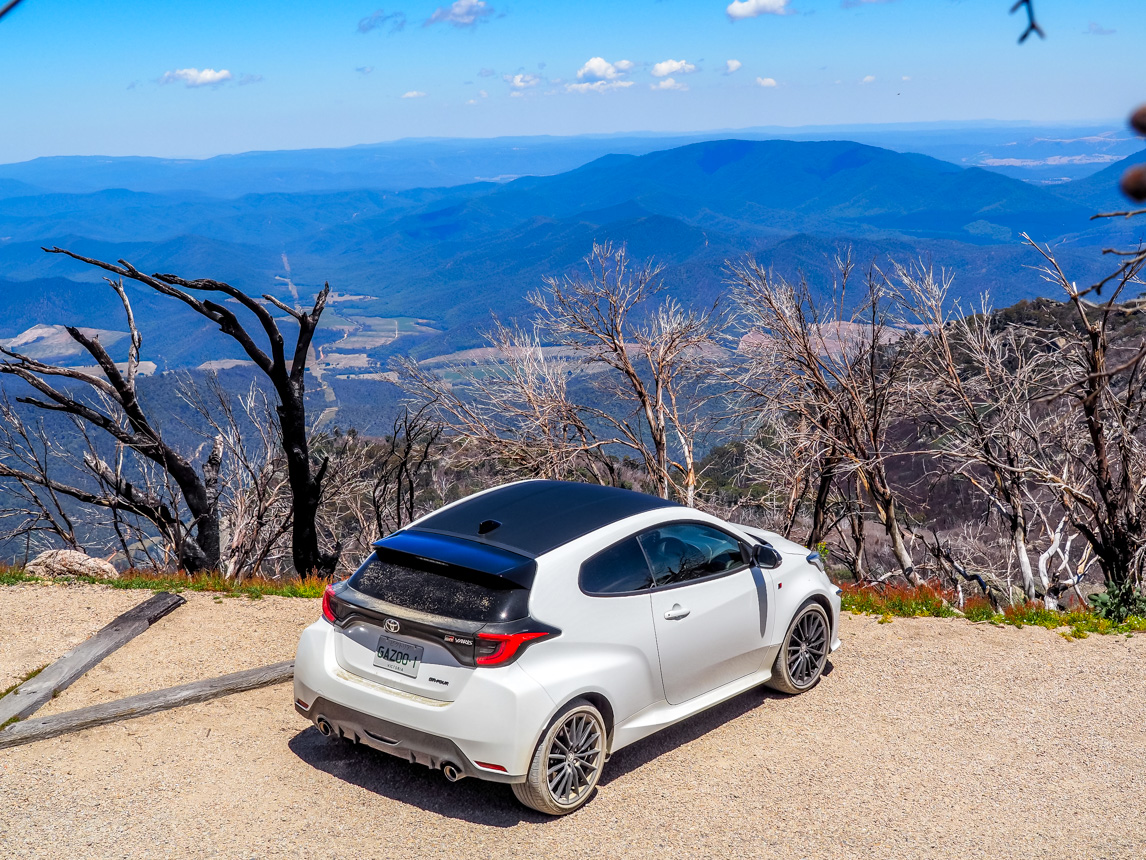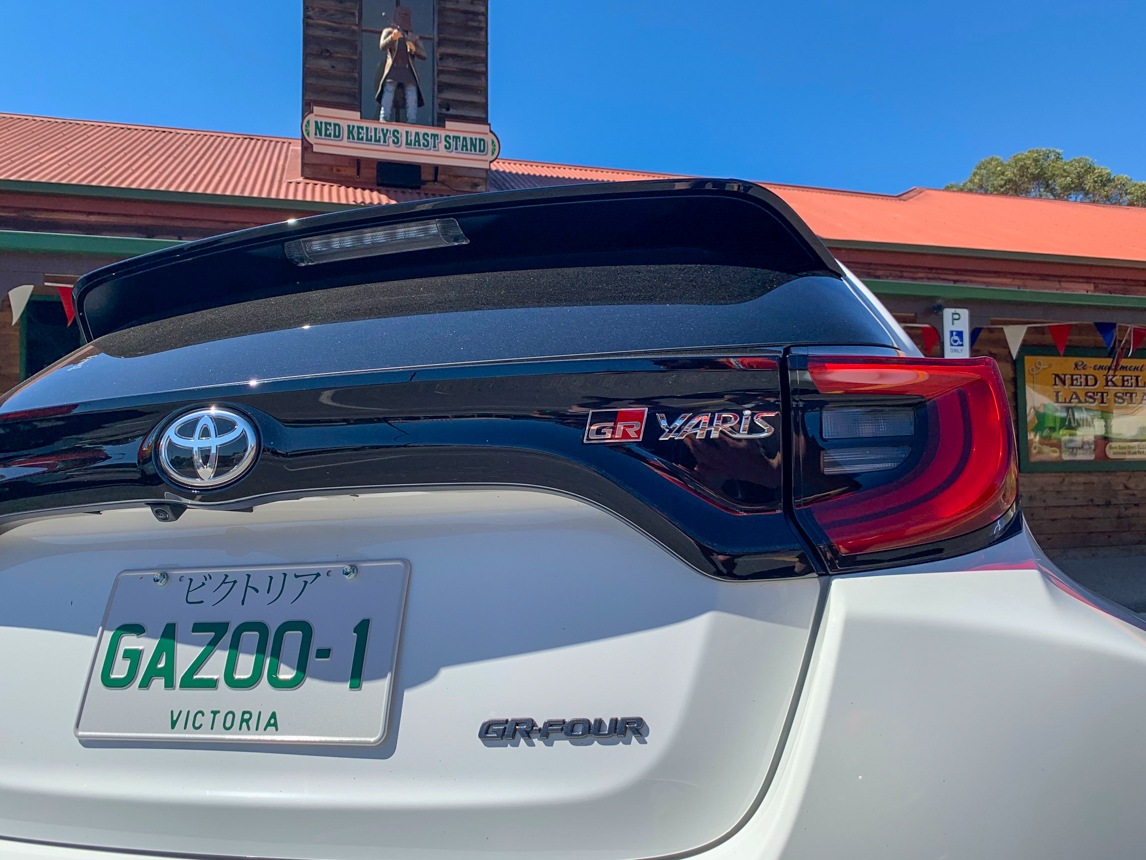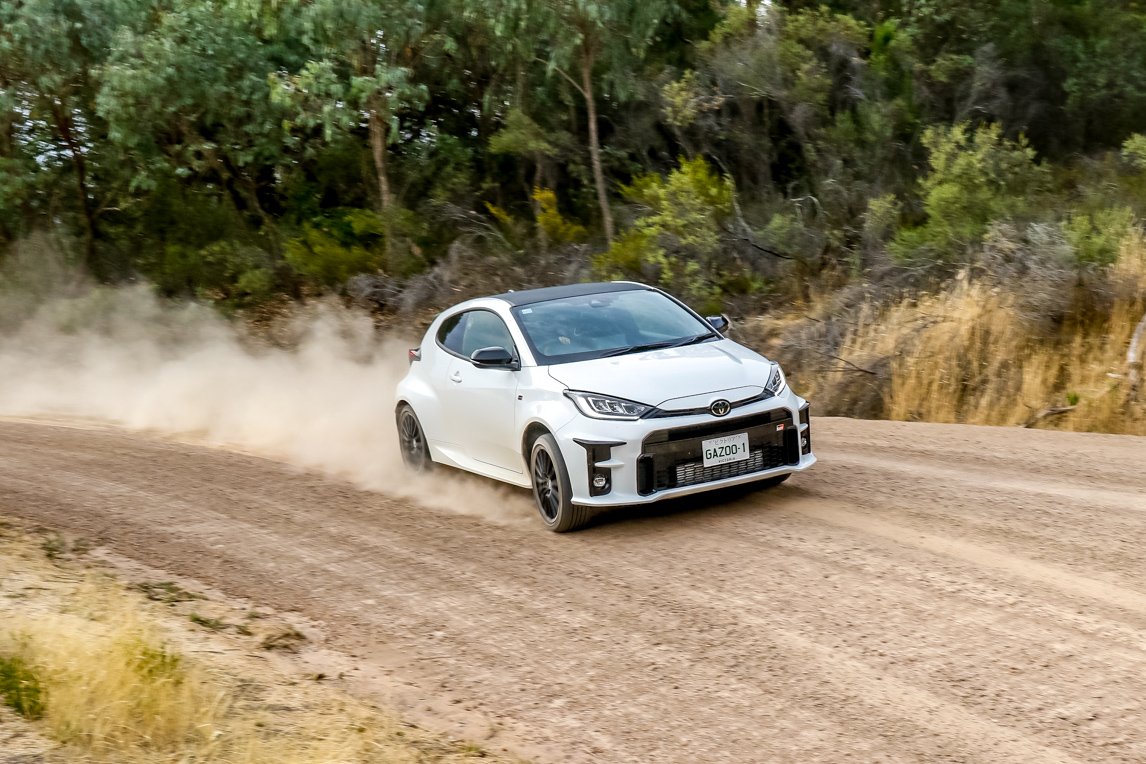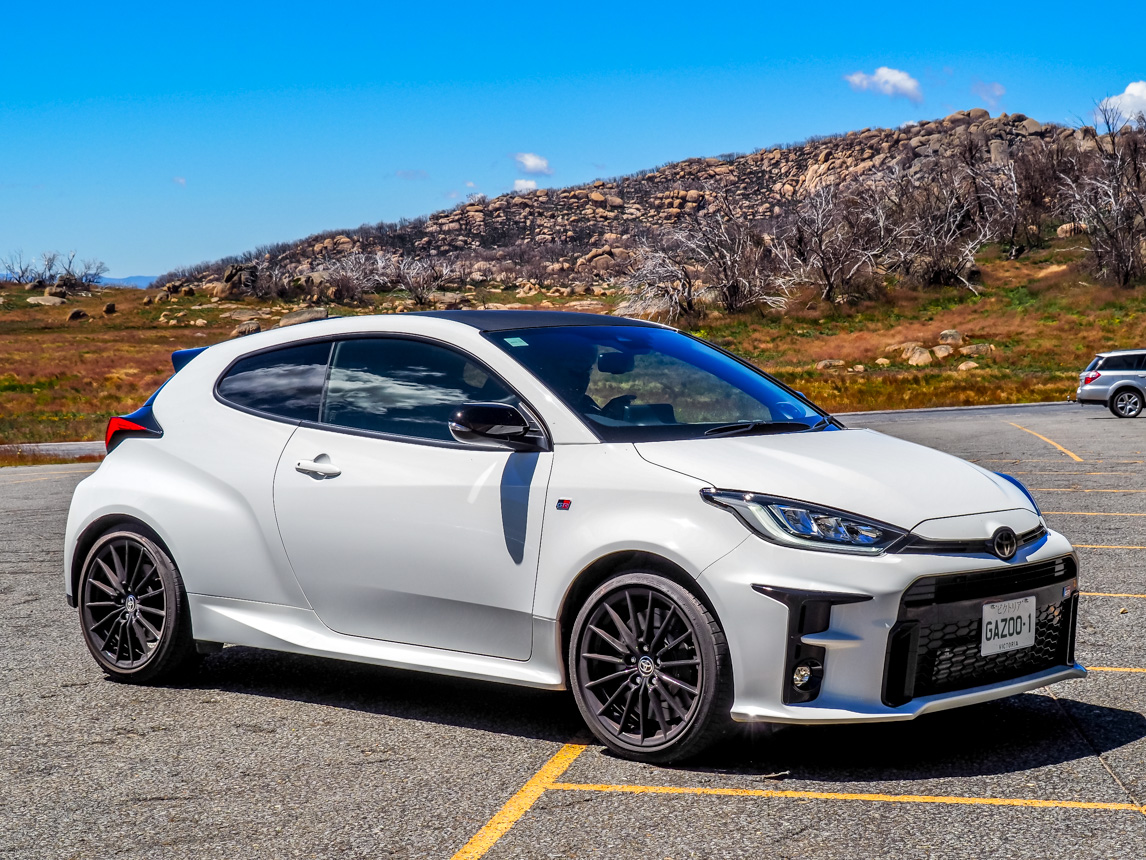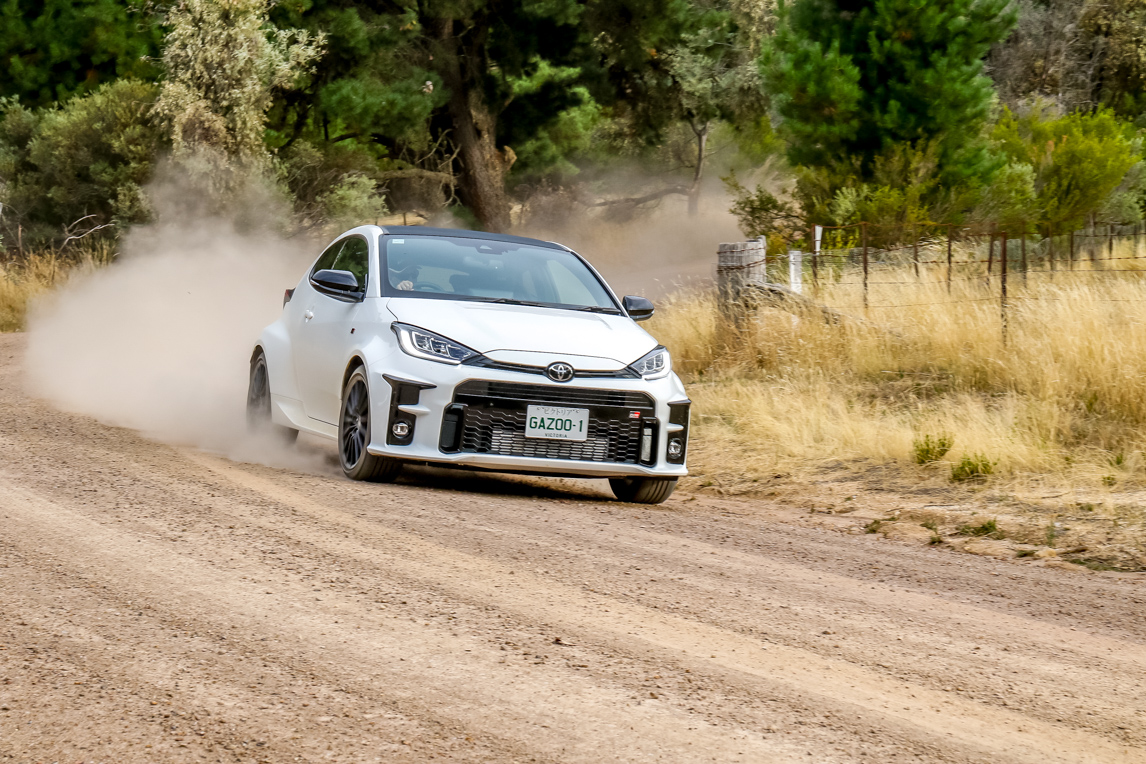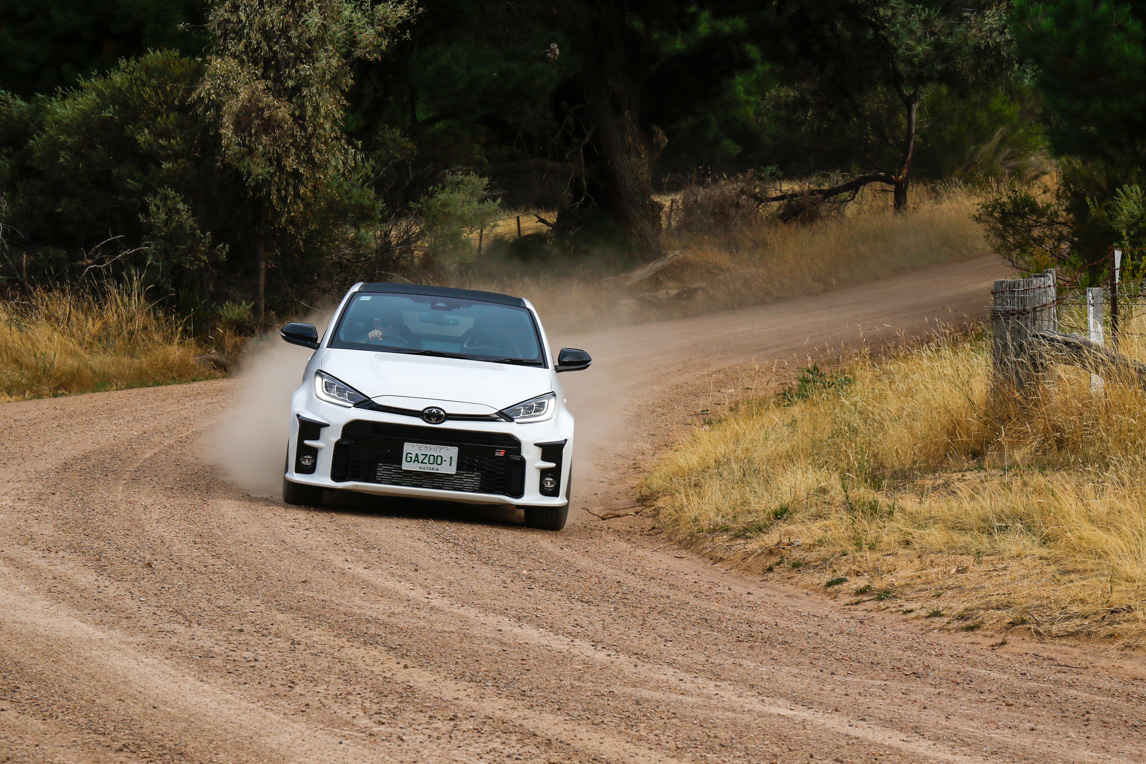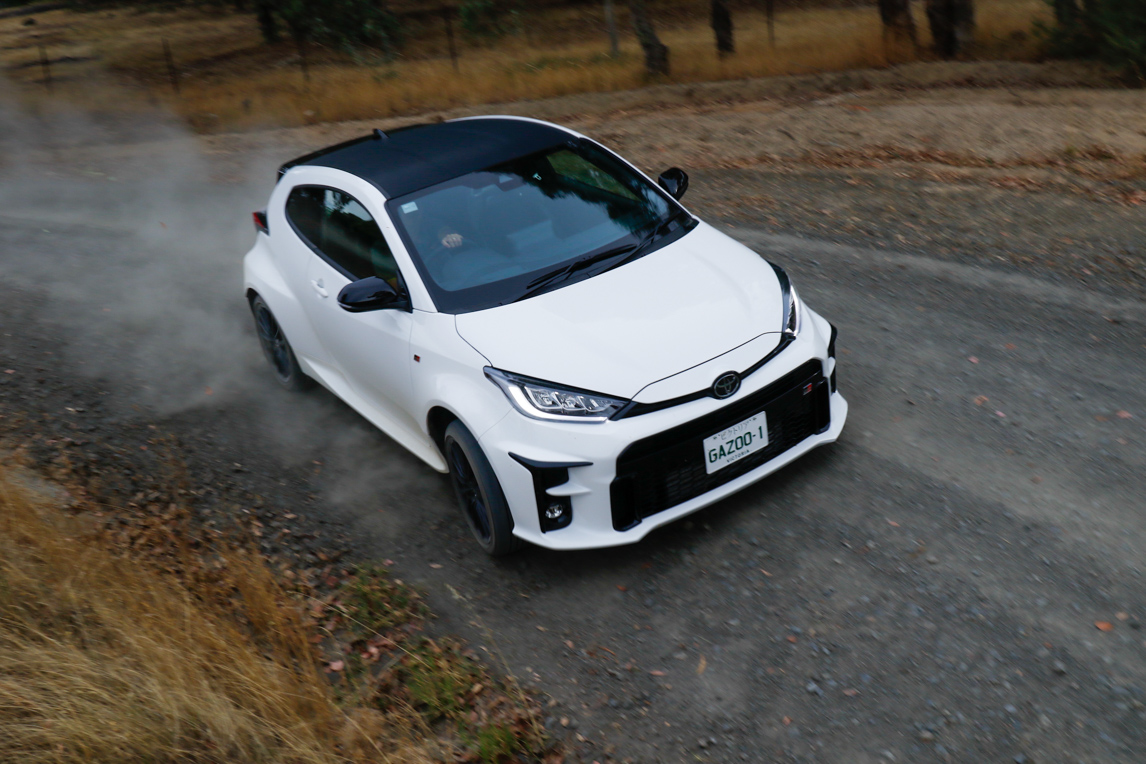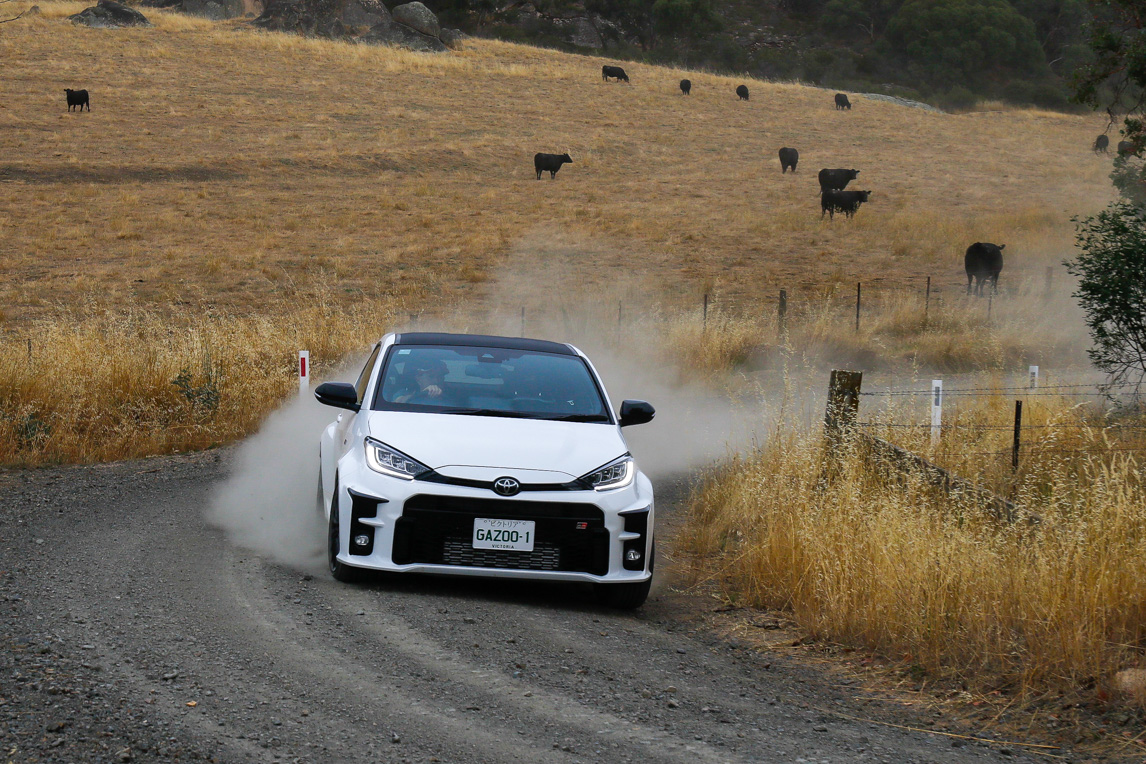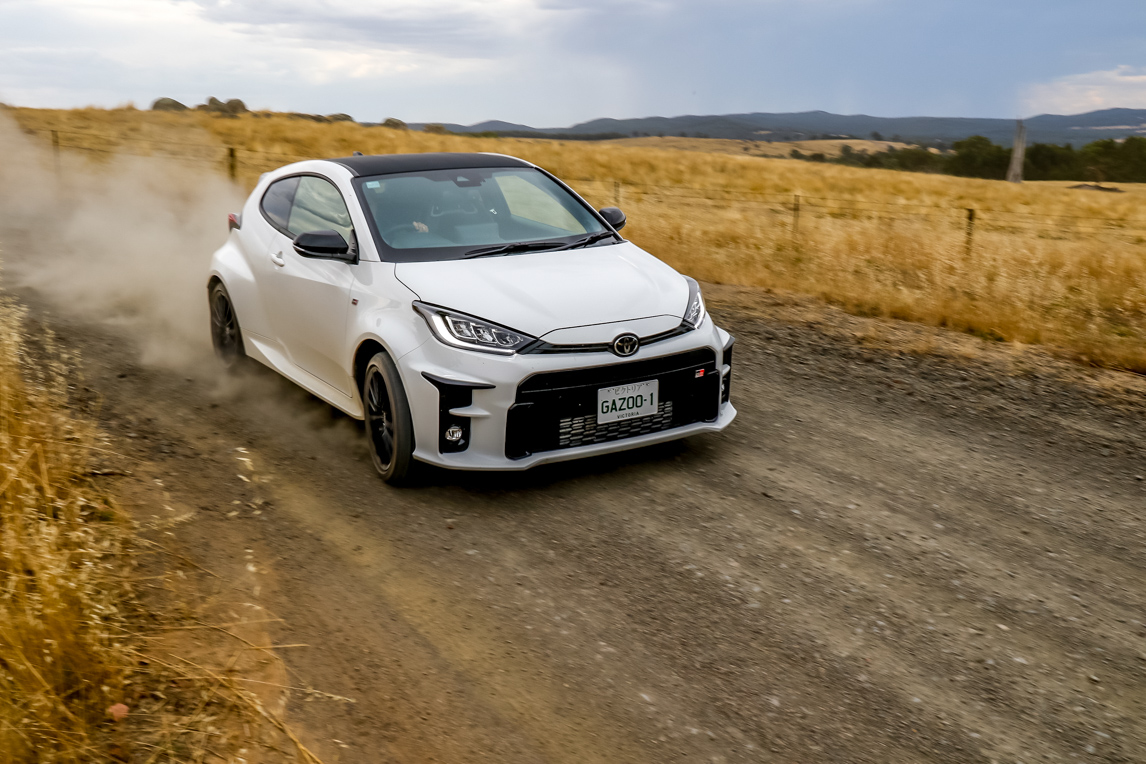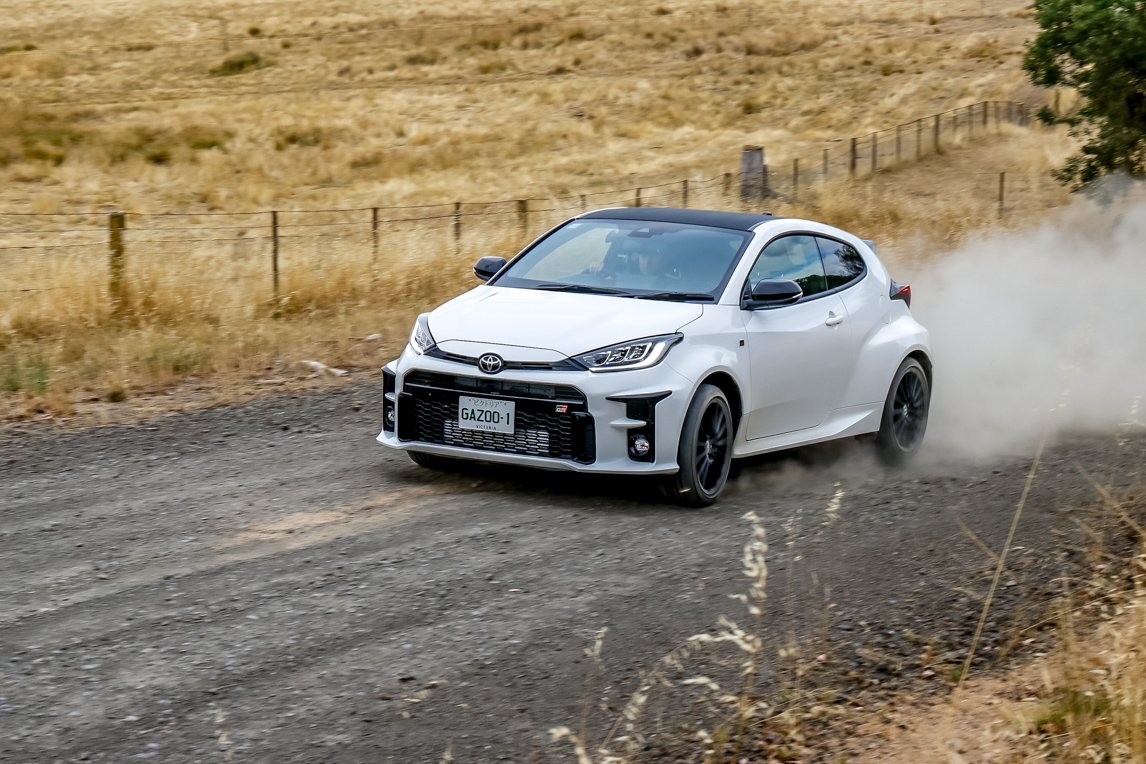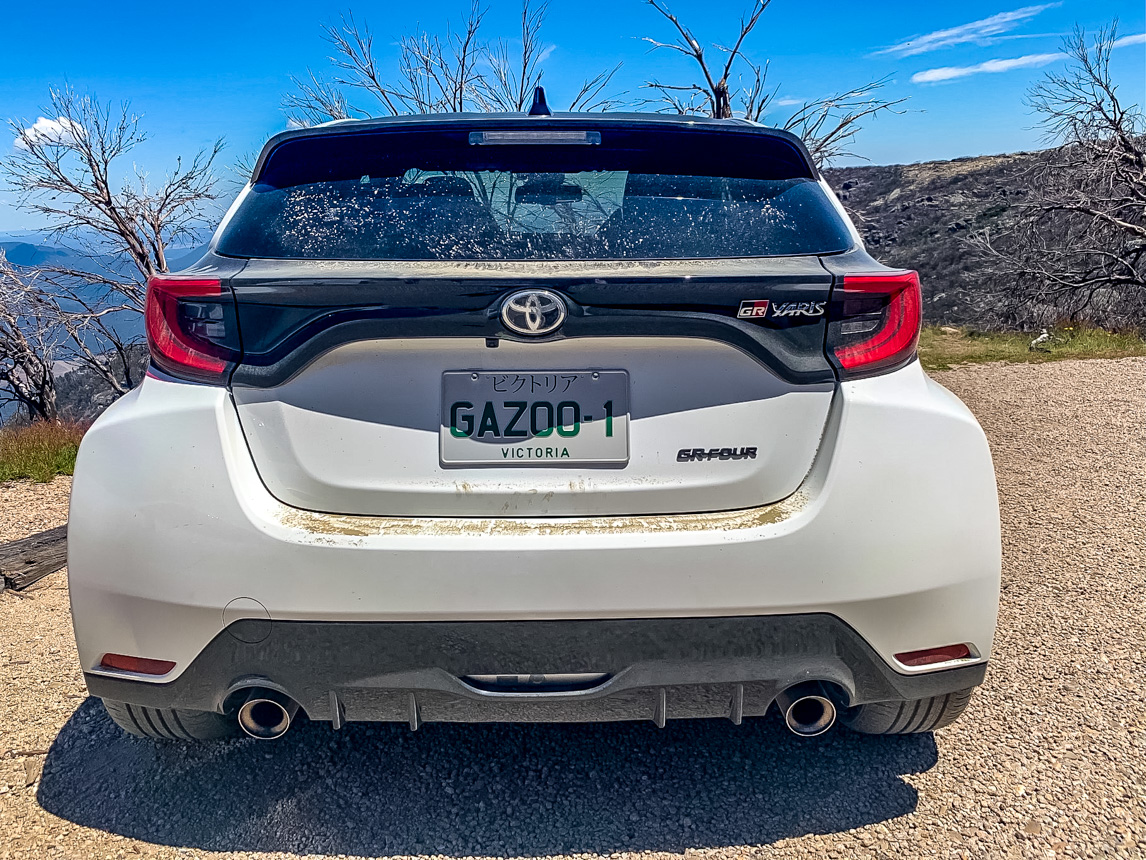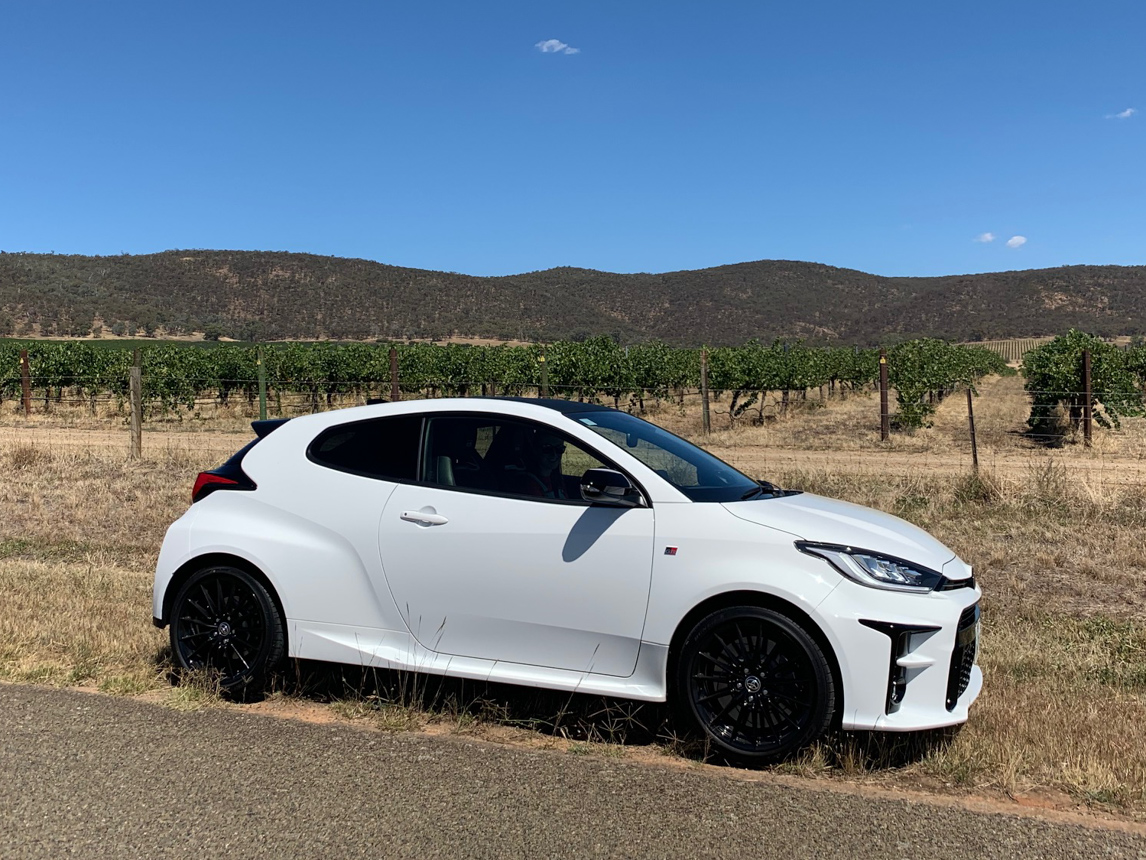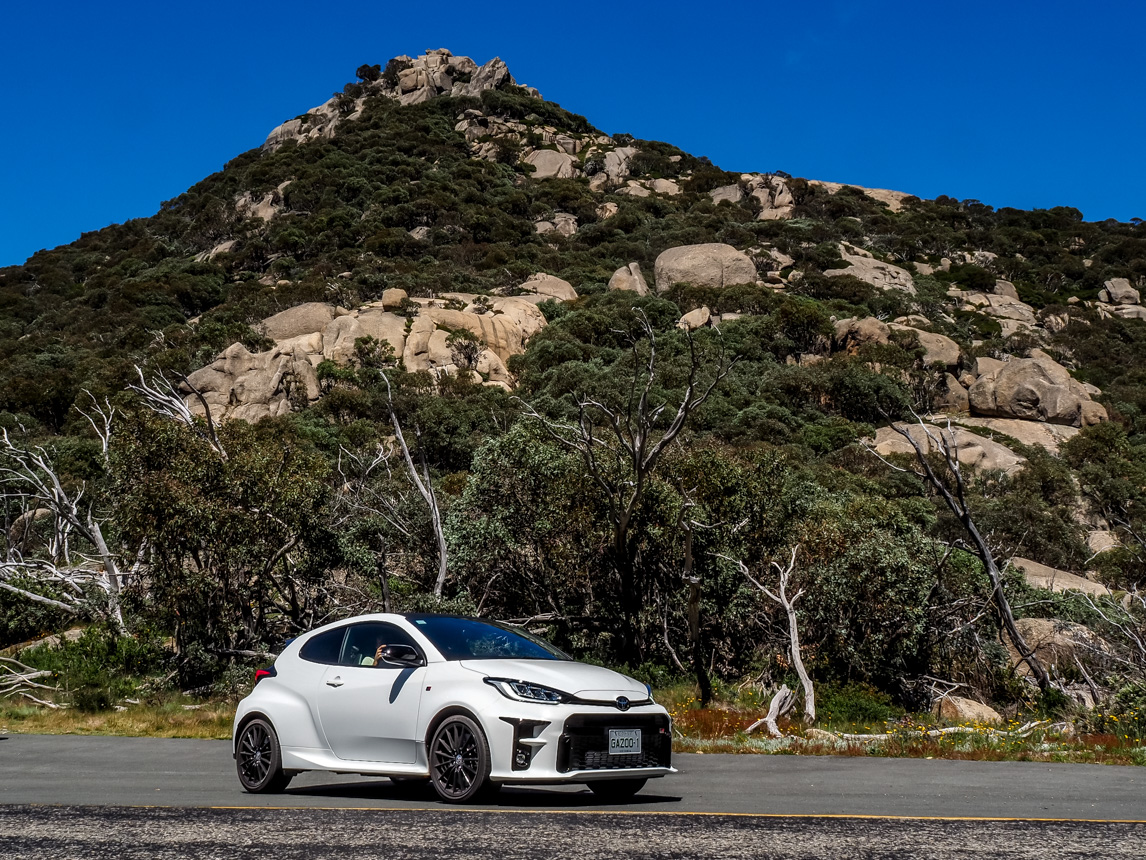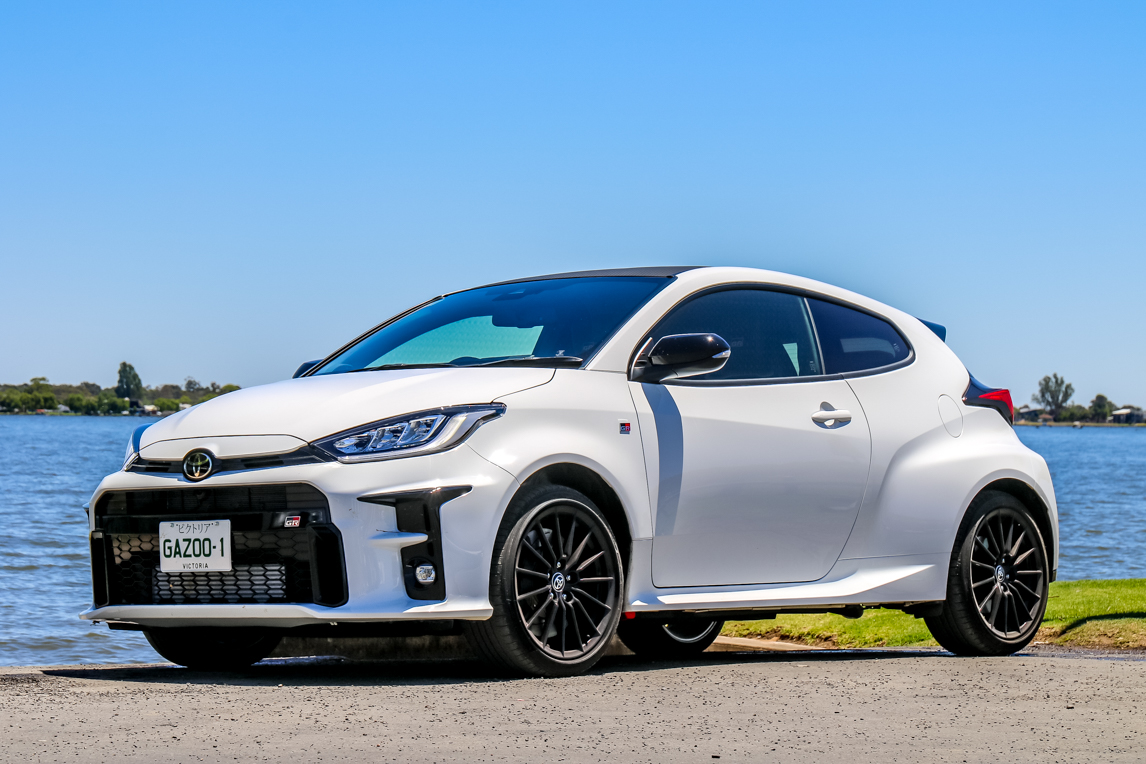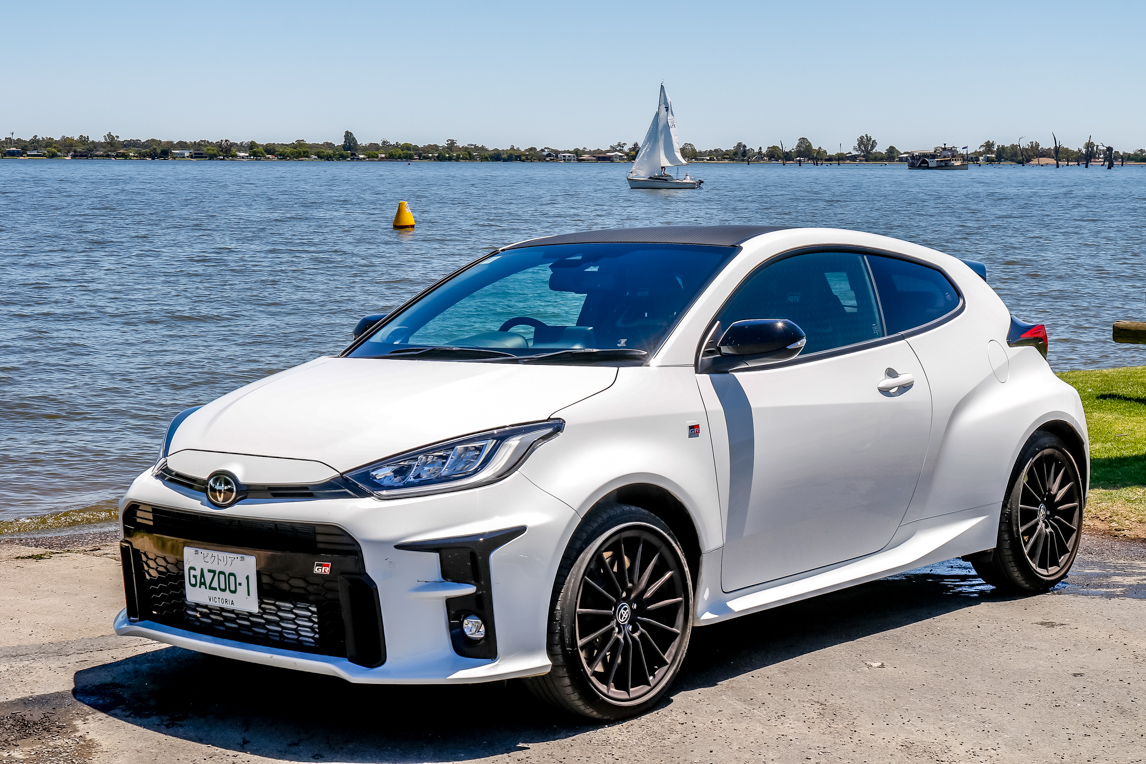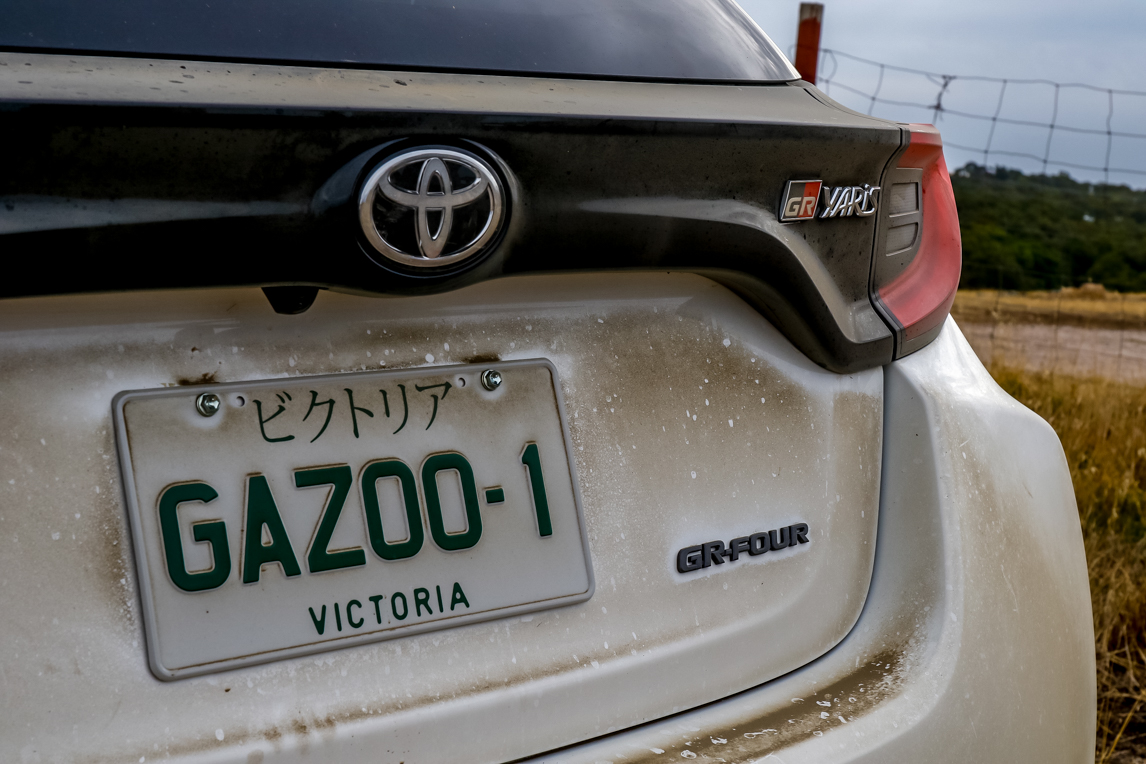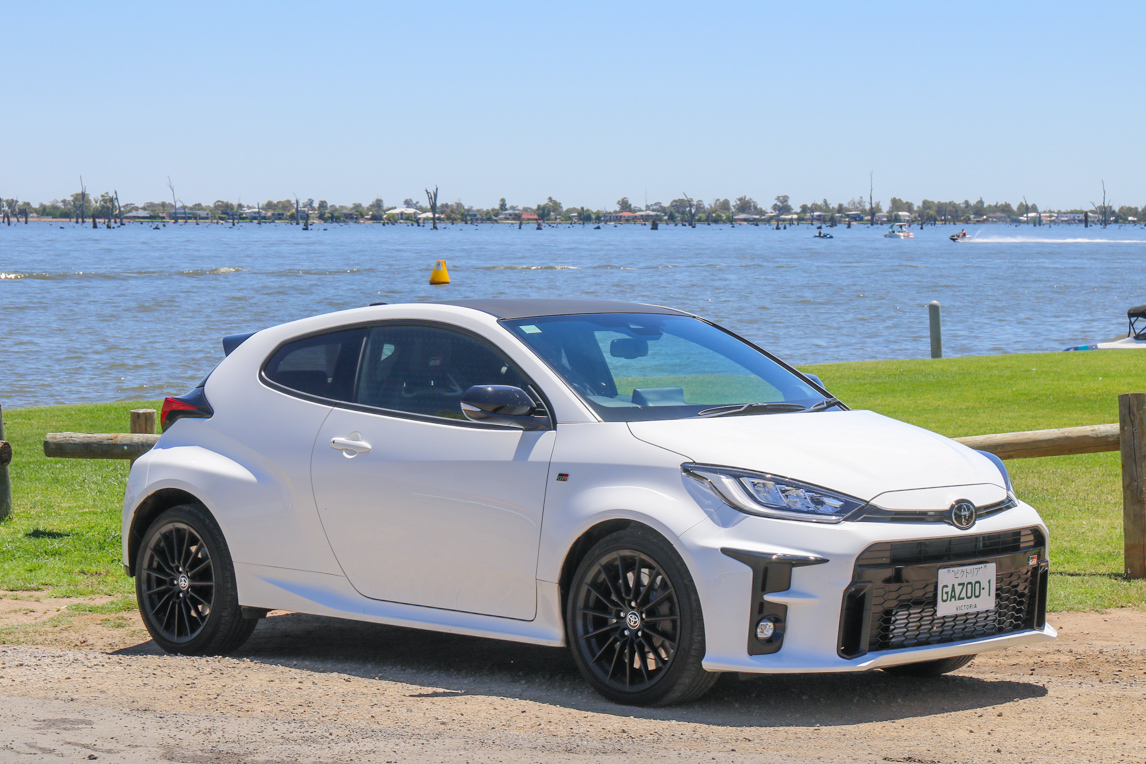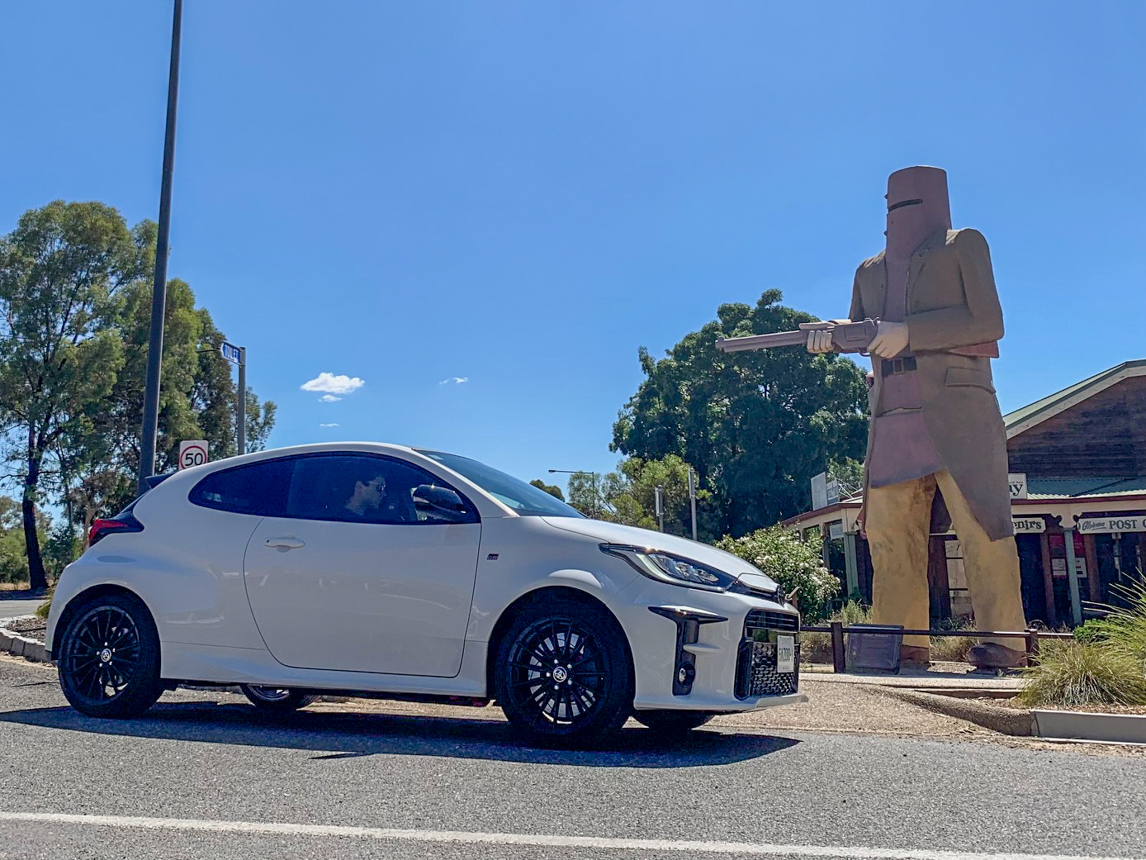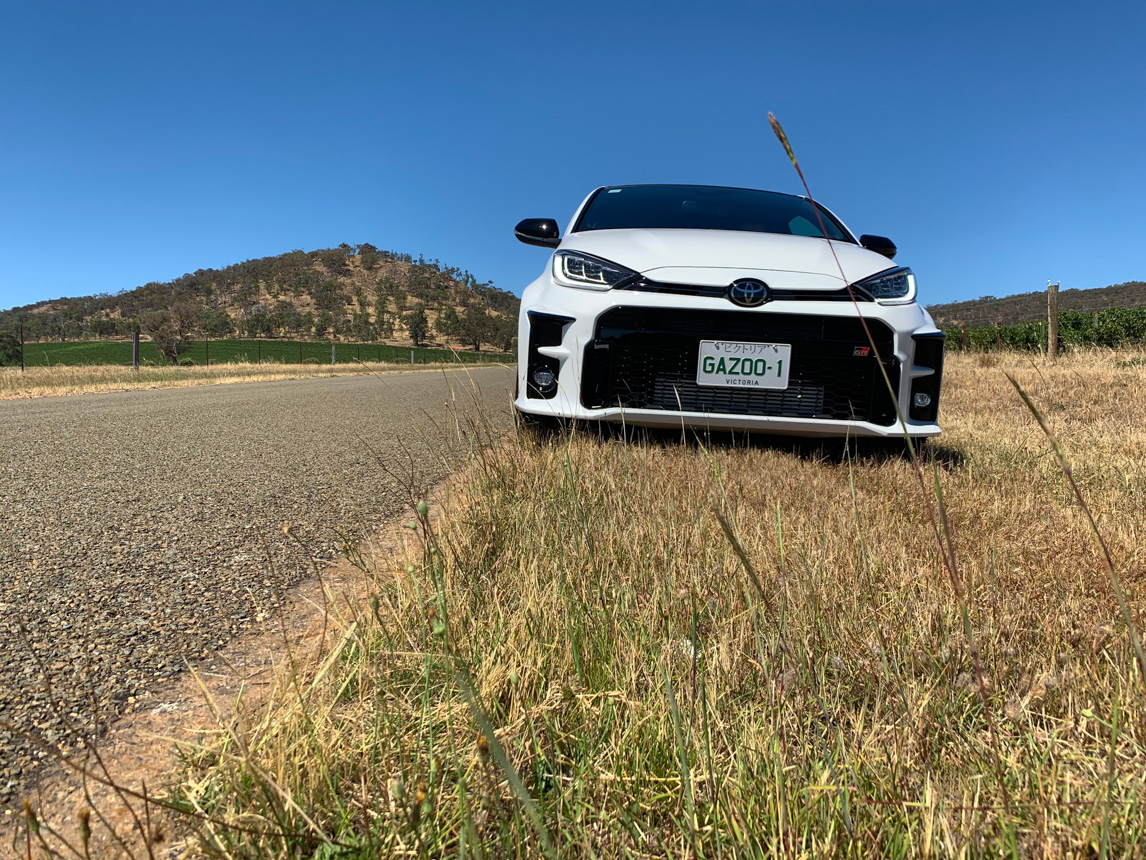As you get on in years, your tendency to become a ‘boy racer’ tends to wane a little, particularly if you have motorsport as a passion and have a playground for such urges.
Yet in just a few hundred metres, the urge to ‘get stuck in’ and work the gearbox became almost unavoidable. Had it not been for the horrid suburban traffic, I may have done just that.
Within minutes, however, everything was back to normal. I merged on to the Western Ring Road, put the Yaris in sixth gear, turned on the cruise control and settled in for the drive home.
In fact, had it not been for the striking ‘GR’ logos that adorn the inside of the cabin and the racey seats in which I was sat, I could have been in any other road car scooting down the freeway at 110km/h.
The Yaris in a nutshell
And there, in a nutshell, is pretty much what the GR Yaris is: a standard road car one minute, a blindingly fast rocketship the next.
If they were going for a Jeckyl and Hyde car, then the Toyota engineers have succeeded brilliantly.
Mechanical
- 200kW, 370Nm 1.6-litre turbocharged three-cylinder petrol engine
- 6-speed intelligent manual transmission (iMT)
- Engine stop-start system
- Electronically controlled permanent GR-FOUR AWD system
- Three selectable modes: Normal, Sport and Track
- MacPherson strut front suspension
- Trailing-arm multilink rear suspension
- Electric power steering
- Performance brakes:
- Front: two-piece ventilated discs with opposed four-piston callipers
- Rear: ventilated discs with opposed two-piston callipers
Exterior
- Three-door body
- Carbon-fibre roof
- Aluminium bonnet, doors and hatch
- 18-inch ENKEI cast-alloy wheels
- Dunlop SP Sport Maxx tyres
- GR black alumite brake callipers
- Tyre repair kit
- LED headlights, taillights and front and rear fog lights
Interior
- GR sports front seats, heated, suede and leather-accented
- GR analogue speedometer and tachometer
- 4.2-inch thin-film transistor multi-info display
- GR leather-wrapped, heated steering wheel with switches (audio, cruise control)
- Leather-wrapped gearshift and park brake lever
- Aluminium pedals
- Soft-touch instrument panel
Price
From AUD$49,500
The nitty gritty details.
Toyota has launched its hotly anticipated 200kW Toyota GR Yaris, a pure performance car forged in the heat of motorsport competition. The new super-hot hatch is already a sales success with local dealers taking 1,200 advance orders.
GR Yaris has all the credentials for competition success. At its heart is a new 200kW/370Nm 1.6-litre turbocharged three-cylinder petrol engine - the world's most powerful mass-produced three-cylinder power plant.
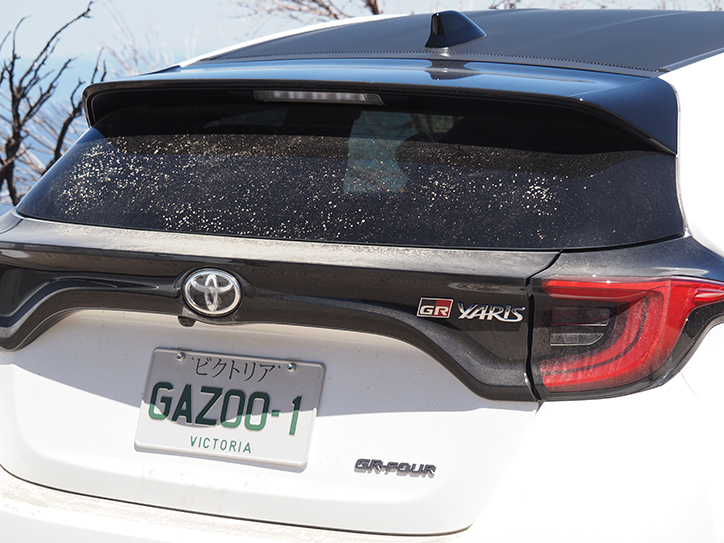
Toyota's rallying pedigree
It began with the Celica GT-Four
It’s been 21 years since Toyota has brought anything quite like the GR Yaris to the market.
The last of three iterations of the Celica GT-Four rolled off the production line in 1999. It was a car built for competition, and it achieved remarkable success on the rally stages – at least in the heavily modified Group A class.
The first GT-Four was the ST165 that Carlos Sainz drove to the 1990 World Rally Championship title, while the ST185 won the WRC three times, in the hands of Sainz, Juha Kankkunen and Didier Auriol.
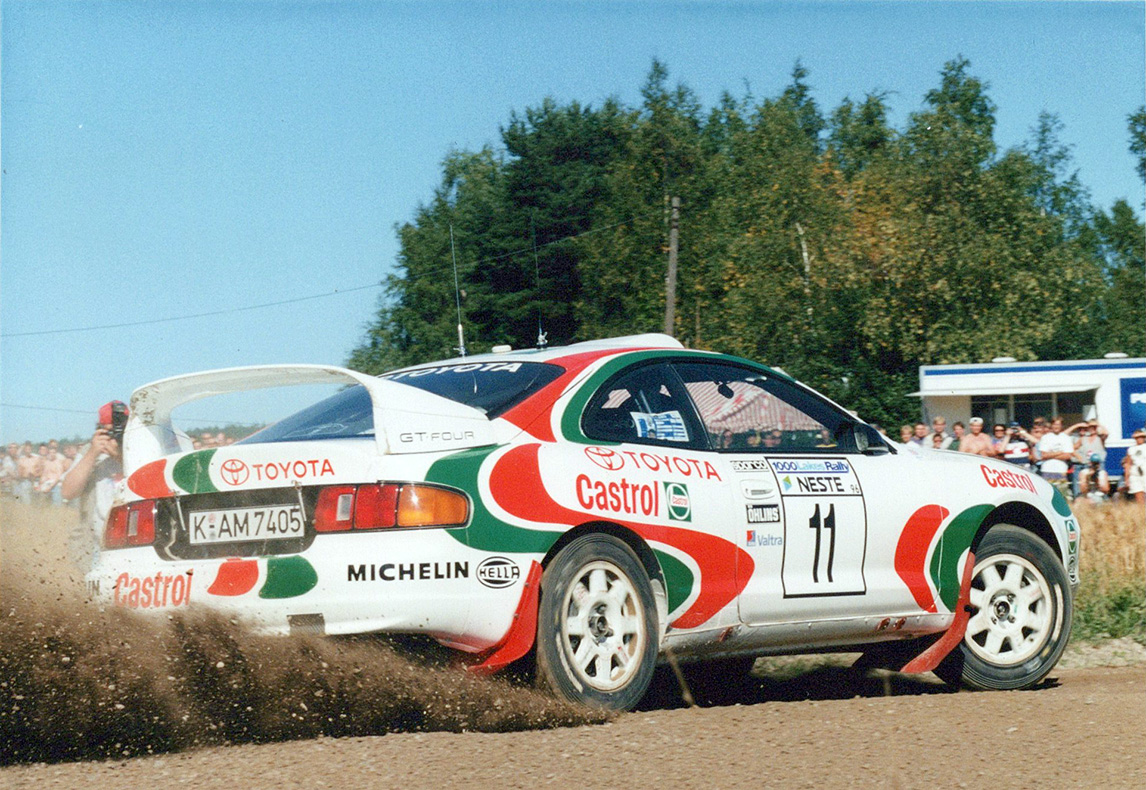
WRC success, then a big void
Auriol would give the ST205 its one and only WRC win, in Corsica in 1995, but when the Group A rules were changed to become World Rally Cars, the Celica took a backward step and the Corolla emerged as the car of choice.
During those WRC years for the Celica, it was really only ever fully competitive in Group A. The Group N version of the car was too heavy in standard trim, and could never match the category leading Mitsubishi Lancers and Subaru Imprezas.
Celicas of that era have certainly become collectors’ items, but unless you are a diehard Toyota fan, the brand has really struggled to sustain any kind of ‘sporting’ pedigree over the years that have come and gone since.
The rear-drive Toyota 86 (co-produced with Subaru as the BRZ) has been a sales hit, but it is more a circuit car than one built for the rally stages, and thus, hasn’t been seen much with a co-driver in the left hand seat.
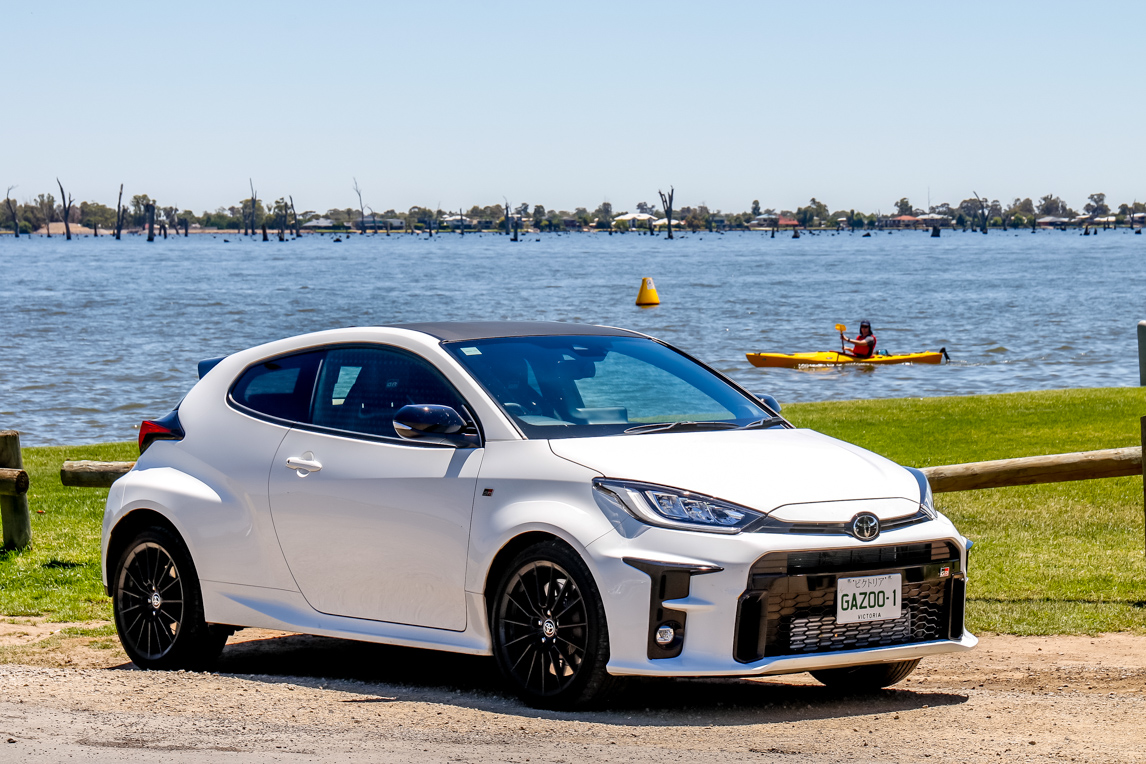
The changing of the guard
It’s probably fair to say that motoring manufacturers, particularly in Australia, have been less than proactive when it comes to gaining leverage from motorsport success.
Skoda, for example, have been the leading manufacturer in the R5 class (now Rally2) for several years, but you can’t walk into your local Skoda dealer and order a ‘rally pack’ version of the Fabia. To its credit though, the cars have been seen in television commercials, which is something, at least.
As the market dictates what is produced, this is more an indication of the changing in the public’s view on what cars should be, rather than what manufacturers want to, or can, promote.
There’s nothing surer that spruiking hybrid this or electric that will get you more brownie points than showing a rally-tuned rocket throwing gravel and carving up the world’s rally stages.
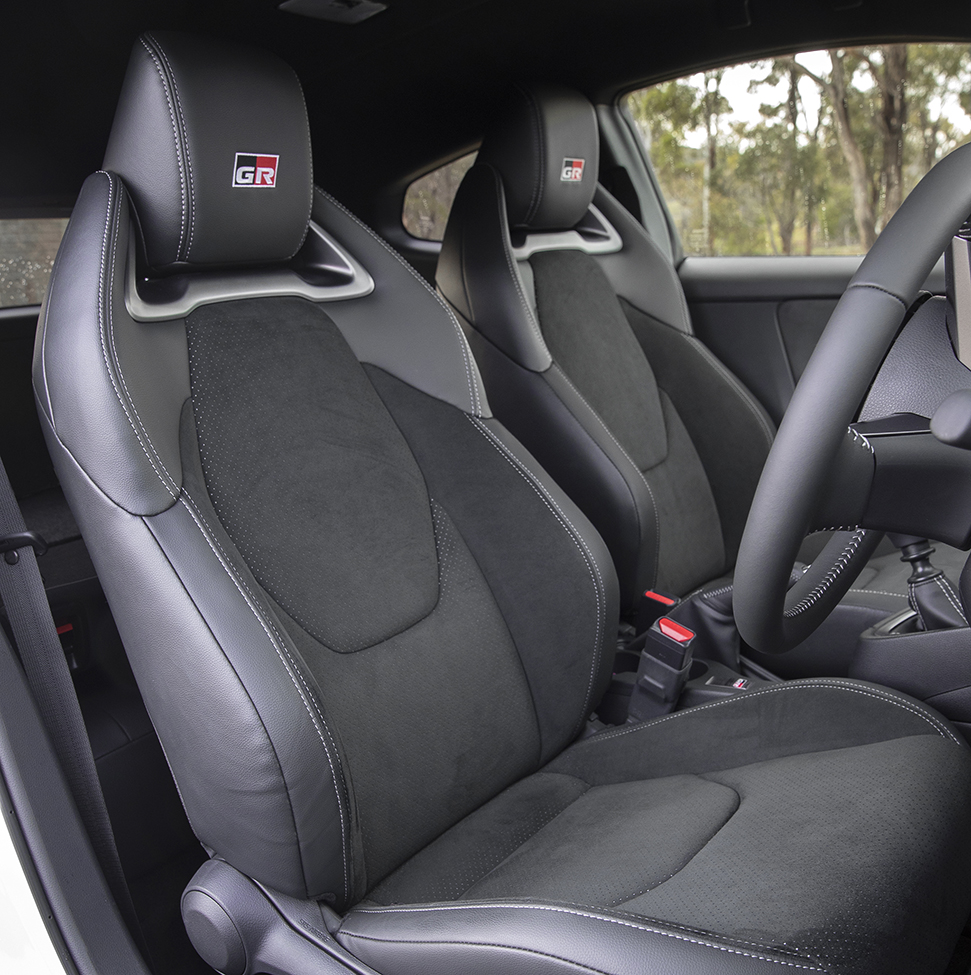
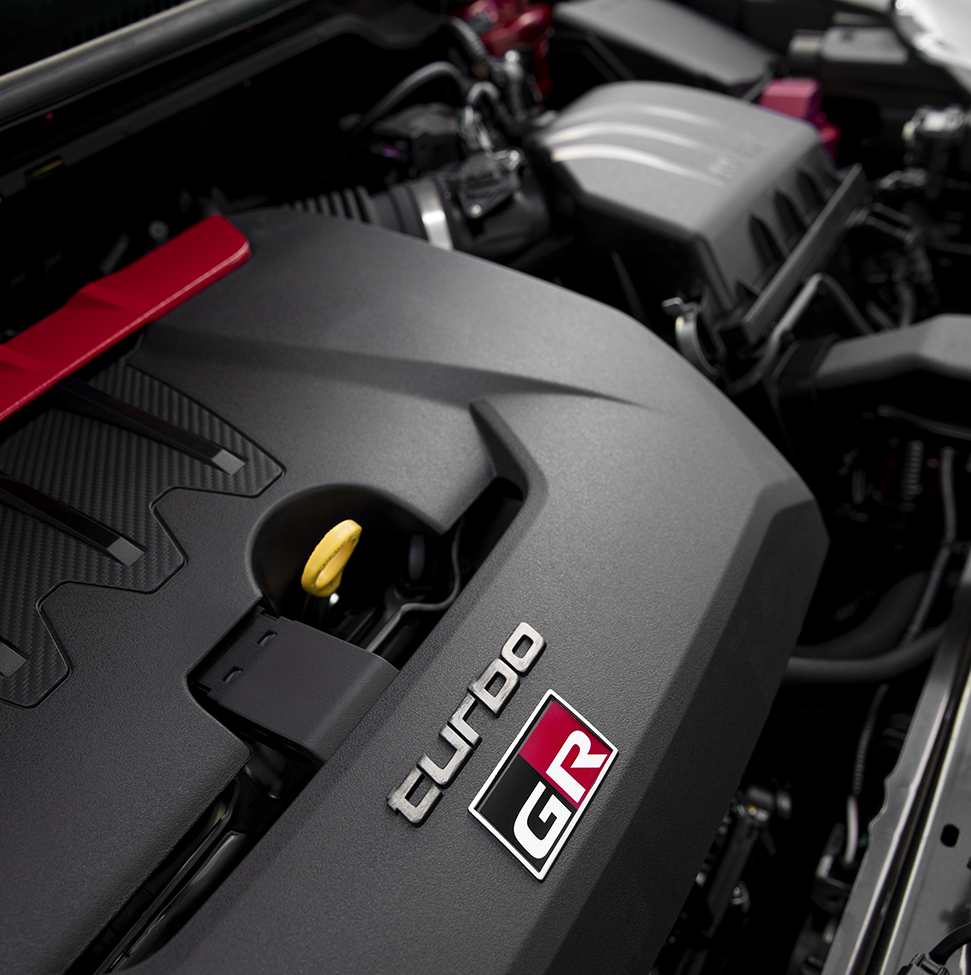
Then along comes the GR Yaris
So it came as a pleasant surprise when Toyota announced the GR Yaris, and that it would be available to you and I to buy.
The car is not just a Yaris with ‘go fast’ stripes, comfy seats and a set of upmarket wheels though. This thing is the real deal, having been designed from the ground up to be a rally winner.
It was even more pleasing when ads for the car started appearing on television, and not just now and then. The GR Yaris is on your screens daily, and is already doing wonders for the car’s reputation.
You’d expect any car that has the name ‘Tommi Makinen’ associated with is going to be something special, and the four-time World Rally Champion had considerable input into the design and development of the car.
So, what’s it like to drive?
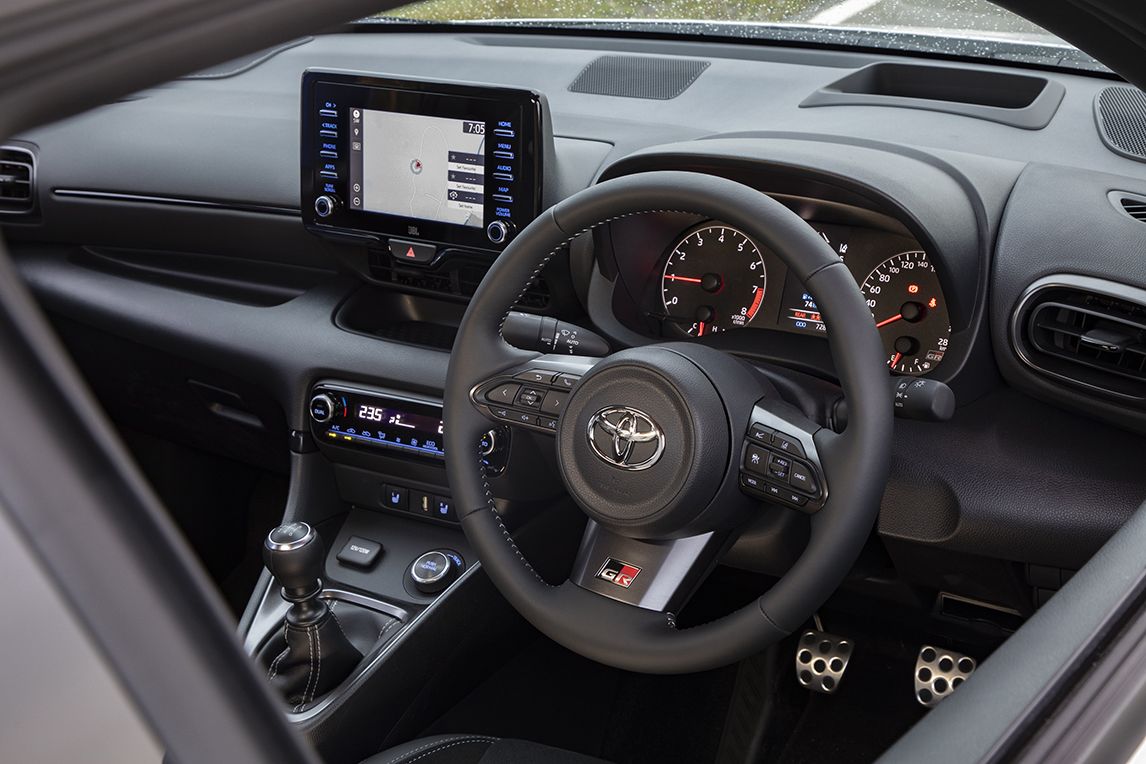
Behind the wheel
As mentioned earlier, the first thing that came to mind when I put my foot down in the GR Yaris was that I could lose my licence. What’s more, it’s so innocuous and easy to drive, I would barely have known I was doing anything wrong if I was pulled up by the boys in blue and had my licence taken from my possession.
The car is so fast – no, indecently fast – that it really is hard to believe that beneath the bonnet is a 1.6-litre engine of just three cylinders. Yes, three cylinders!
While it wasn’t my job to do back-to-back or comparative tests in the car, official figures quote 0-100km/h in just 5.2 seconds, and owners of the car report that they’ve chopped a full half second off that time.
I can report that if you want to get the most out of the GR Yaris, then you’re wasting your time on the open road.
From a standing start, I was quickly up through the gears, the speedo touching over 150km/h in fourth gear – and I still had two gears of the slick six-speed gearbox to go.
As I said, I could lose my licence in this thing!
I took the car on a Sunday drive with the family on a hot January day, choosing the run up Mt Buffalo in north east Victoria to try and stretch the car’s legs.
Of course, Sunday traffic on the road was painfully slow, and I spent most of the time stuck behind other cars, but when the opportunity arose, the GR Yaris was in its element.
The car has phenomenal torque in any gear, enabling you to maintain corner speed and allowing you to make full use of the four-wheel drive traction and road holding. Where other cars would be rocking and rolling and sending you dangerously towards the centre white line and oncoming traffic, the Yaris holds tight.
With a wheel on each corner, it’s like a go-kart to drive, the steering firm and direct, the gearbox easy to use, and the brakes supremely effective. Whether going uphill or down, you have full confidence that the car is going to do everything you ask of it.
There are three modes of performance from the car. In ‘normal’ mode the drive is shared 60:40 front to rear, but by selecting ‘sport’ mode that becomes 30:70 and makes the car more nimble and much more fun. It should have been called ‘rally’ mode.
Finally, there’s ‘track’ mode, which shares the drive 50:50 and is more suited to tarmac applications.
You can switch between each mode while driving along, depending on the situation you find yourself in. It’s clever stuff.
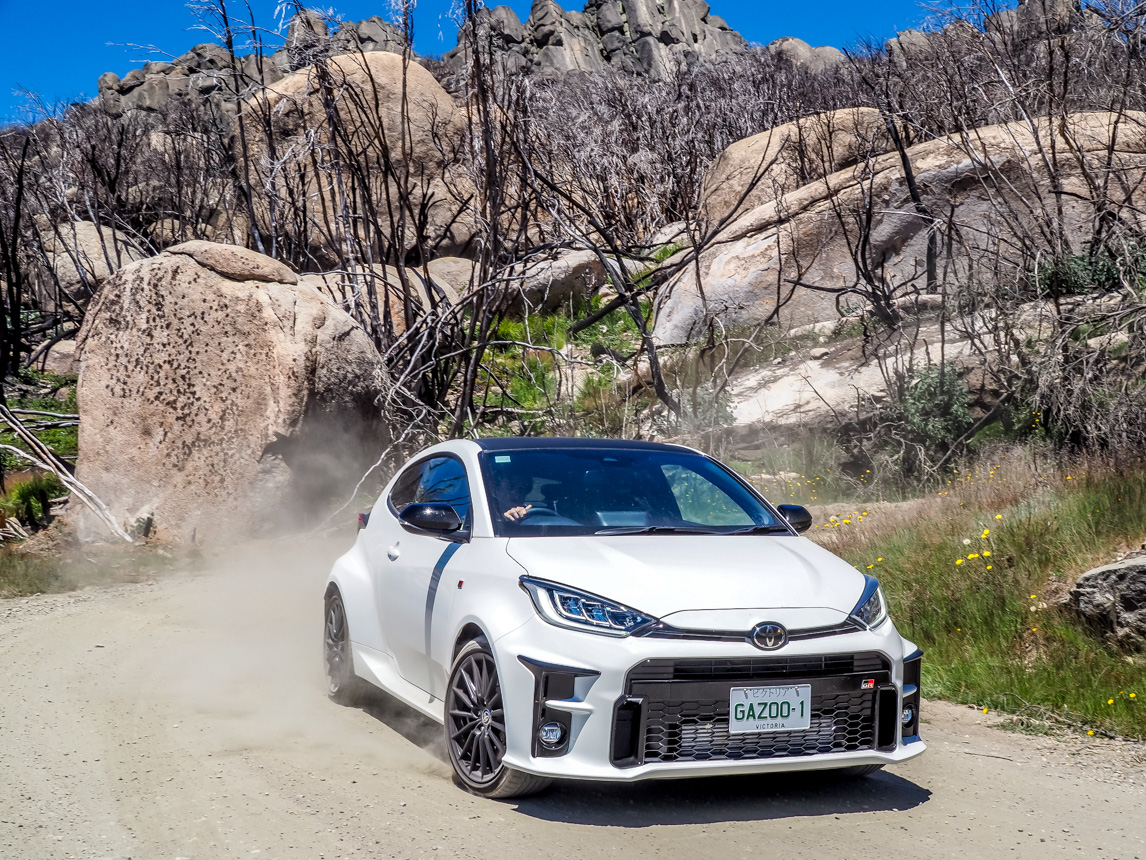
I’m not going to give you chapter and verse on the car’s specifications, performance figures and comparisons against other cars in the market – there are plenty of in-depth reports around where you will find that information – but I will say that the GR Yaris is the most fun car I’ve ever driven.
The other thing is, the car looks pretty much like your everyday road car. Sure, it looks beefy, sits low and wide and oozes speed just standing still, but it doesn’t shout “Hey, I’m a rally car, pull me over and give me a ticket”.
With no real distinctive stickers or markings on the car, you can toddle through traffic like any other Camry, Corolla or Yaris and nobody will be any the wiser.
Once you get a clear piece of road though, then the world gets a whole lot more fun!
Gravel rash
Interestingly, the GR Yaris doesn’t come with a spare tyre, just an emergency kit to fix an already flat tyre. In meant that I wasn’t going to venture far off the tarmac to test the car’s rally-ability.
Nevertheless, some smooth gravel roads were earmarked for a brief test of the car’s capabilities on the loose stuff, and like on the tar, it didn’t disappoint.
Within a couple of hundred metres, it was blatantly obvious that this thing would be an absolute weapon in rally trim.
Bolt in a roll cage, give it some rally wheels and suspension, a bit of underbody protection and other bits and bobs, and you’d have a rally winner straight out of the box. I have no doubt about that.
Neal Bates agrees, adding that in Production Rally Car trim it would be a car to watch.
It was tough to gain too much feedback on the car’s performance on gravel from the limited time we had. On fat road tyres, low suspension and no underbody protection, I had to tread very gently, but I gained enough to know that an average rally driver could be very fast in one of these cars.
To date, there’s no news of anyone in Australia building a GR Yaris into a rally car in PRC trim, but it will happen.
I don’t think there’s any risk in saying that this car could (and perhaps will) become the Lancer Evo or the Impreza WRX of the 2020s. It’s that good.
There’s even a new ‘Rally’ version of the car coming in March too, with limited slip differentials and a few other tricky bits. Unless you’re going to hit the race track though, sticking with the GR model should more than suffice.
Pros and Cons
It’s actually hard to pick faults with the GR Yaris unless you really want to get picky.
My day job isn’t to test drive cars and find their deficiencies, but I think that makes my thoughts and opinions on the car all the more relevant.
There’s no doubt that from a user point of view there are things that were a little annoying.
Boot and rear seat space, for example, is minimal, and the small gap between the rear-view mirror and the navigation screen on the dash creates a tunnel that is hard to see out of.
None of those things matter though. You’re not buying the GR Yaris to go on holiday or to cart the kids to and from school.
The car was built for a purpose – as a fast, competition special – and the fact that it is road registerable and can be driven as a daily driver is just one of the added bonuses for those who don’t have the coin to weld in a roll cage and hit the stages.
To my mind, this is a car that has absolutely ticked all the boxes. It’s the jewel in Toyota’s crown, and will become a collectors’ item in years to come – if it’s not already.
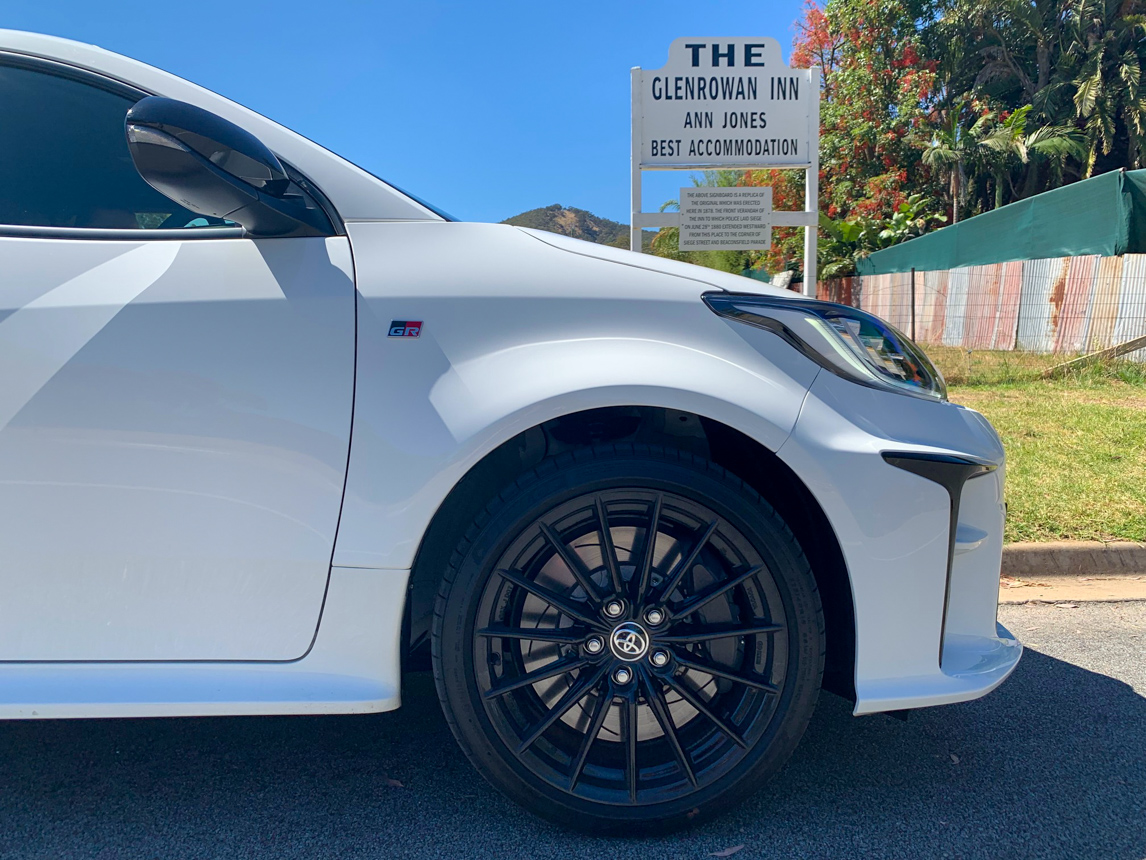
Deal or no deal?
Would I buy one? Definitely yes, but probably no.
I know that sounds contradictory, but it depends on what you want from a car, and how much money you have to spend on your hobbies (or addictions).
As a car that does everything that it promises and then some, the GR Yaris is a winner, no question.
But unless you’re buying it with the plan to drive it in a competition of some sort – circuit sprints, tarmac rallies or on the gravel – then I’d wonder whether I was buying it simply to be one of the cool kids.
On the open road and around town, you can’t get anywhere near the full potential out of the car, and you would find the car spending 95% of its life doing the job of a Corolla or a Camry, and only 5% of the time being Harry Bates.
Is that such a bad thing though? Probably not, particularly if you have the money to buy the car and want to see it go up in value as the years tick by.
For the purchase price of under $50k, you’ll definitely see a return on your investment in the years to come.
Practicality usually wins out when making big purchases though, so whether you decide that the GR Yaris is for you, only you can decide.
If I was to give you any advice, it would simply be, if you want one, can afford it and have a use for it, then buy one. No question!
Well over 1000 Aussies have already done just that.
The cars have sold like hot cakes, and the cult following that the WRX and the Lancer Evo have long had might eventually be attributed to the GR Yaris as well.
For the work Toyota has put into the car, and the unquestionable success it has been so far, it deserves nothing less.

